Uttarakhand, also known as Devbhoomi (land of gods), is a north Indian state nestled in the lap of the Himalayas. It is a natural paradise blessed with diverse flora and fauna.
The state is home to many rare species of birds, making it a delight for bird lovers and ornithologists. The topography of Uttarakhand, which ranges from snow-capped mountains to lush green forests, provides a perfect habitat for different species of birds.
The state has several birding hotspots such as Nainital, Corbett National Park, Rajaji National Park, and Jim Corbett Tiger Reserve, to name a few.
In this article, we will explore the rich avifauna of Uttarakhand and the best places to spot them in their natural habitat.
1. Himalayan Quail
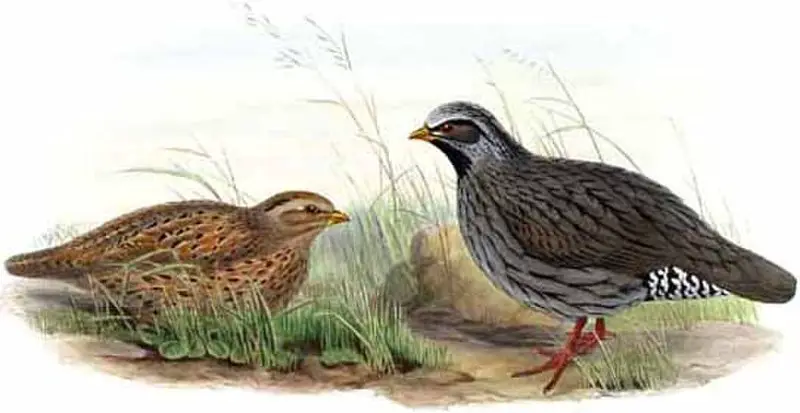
The Himalayan quail is a medium-sized bird belonging to the pheasant family. It was last seen in 1876 and is now feared extinct.
This species has only been reported from two locations in Uttarakhand, India, with 12 specimens collected for study over time.
The main identifying features of this unusual quail are its red bill and legs along with grayish brown plumage on its body which gives it an overall buff coloration.
Its diet consists mainly of vegetation such as grasses, seeds and buds found near their habitats at high altitudes in the western Himalayas region.
Unfortunately due to habitat destruction caused by human activities and lack of research data regarding.
The decline of this species’ population numbers, no one can accurately comment on whether or not they have gone completely extinct since being spotted nearly 150 years agoScientific classification:
| Kingdom | Animalia |
| Phylum | Chordata |
| Class | Aves |
| Order | Galliformes |
| Family | Phasianidae |
| Tribe | Coturnicini |
| Genus | Ophrysia Bonaparte, 1856 |
| Species | O. superciliosa |
Also Featured In: Common Birds in India,
2. Himalayan Monal
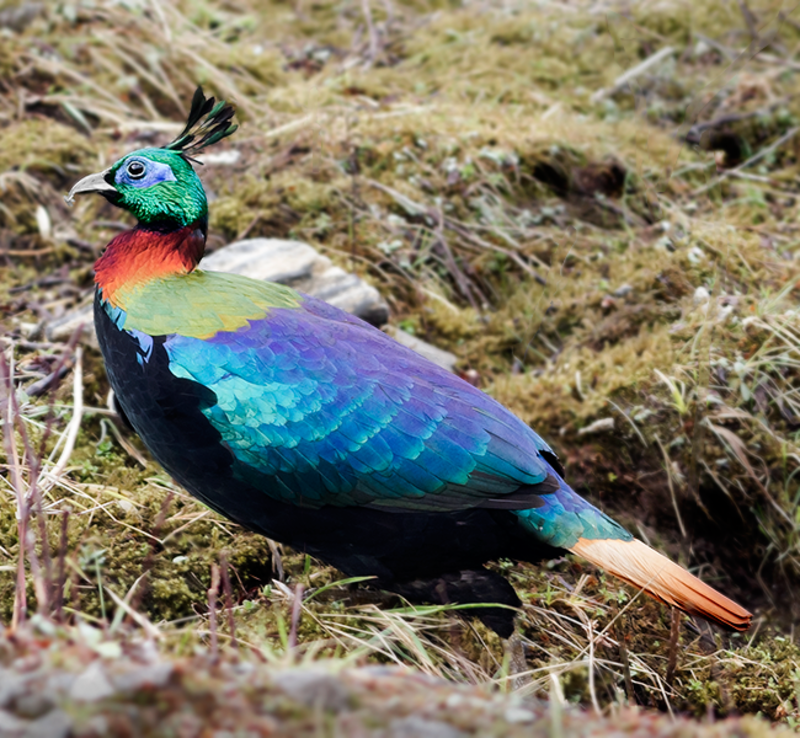
The Himalayan monal (Lophophorus impejanus) is a beautiful species of pheasant native to the forests and shrublands of the Himalayas. It can be found at elevations ranging from 2,100-4,500 meters.
This magnificent creature has been listed as Least Concern on IUCN’s Red List due to its wide distribution range and stable population size.
In Nepal it is known as Danphe or Danfe, which also happens to be their national bird.
Uttarakhand in India recognizes this species as their state bird too. The colorful feathers boast hues of green, blue and bronze that make them quite captivating to watch out for.Scientific classification:
| Kingdom | Animalia |
| Phylum | Chordata |
| Class | Aves |
| Order | Galliformes |
| Family | Phasianidae |
| Genus | Lophophorus |
| Species | L. impejanus |
3. Western Tragopan
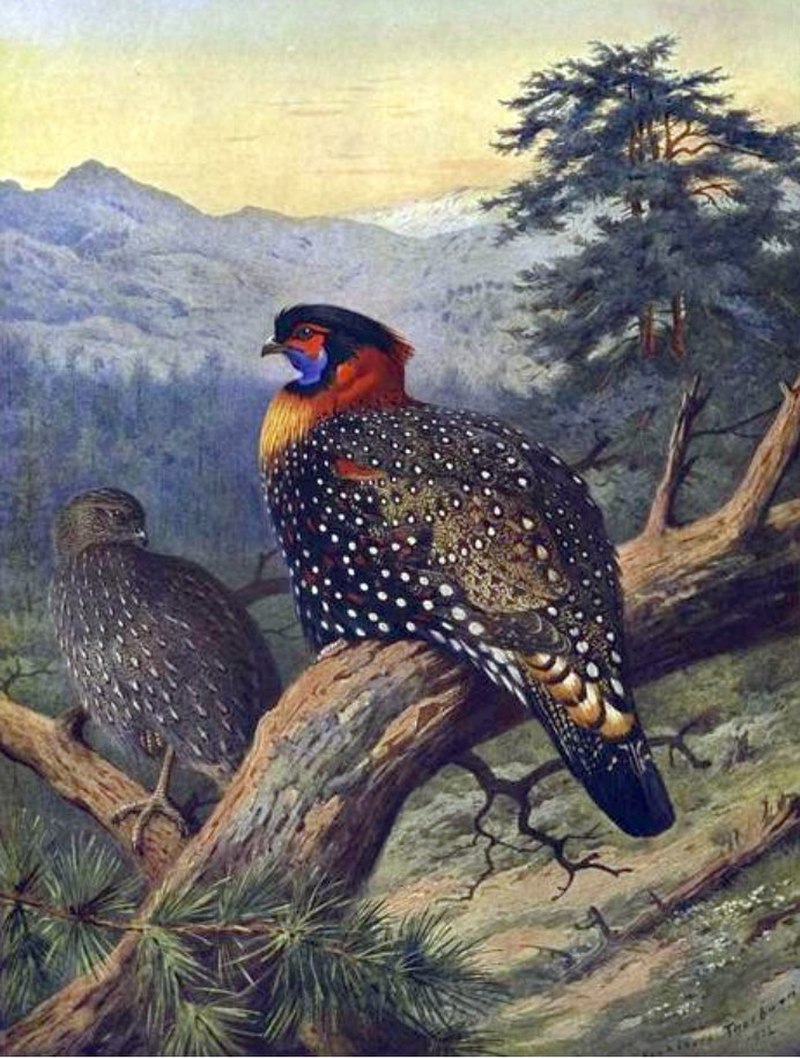
The Western Tragopan is an iconic bird of the Himalayas, boasting a dazzling array of radiant feathers. The male has striking black and grey plumage with white spots all over its body.
It’s highly endangered species that is globally threatened due to habitat loss in its range along the Himalayan mountain chain from northeastern Khyber Pakhtunkhwa province in Pakistan to Uttarakhand state within India.
Its survival relies on protecting remaining areas where it can thrive undisturbed by humans as well as reintroducing captive-bred populations into suitable habitats for long term sustainability.
Without conservation efforts, this unique creature may disappear forever from our world making us poorer for not having had the chance to admire such beauty ever againScientific classification:
| Kingdom | Animalia |
| Phylum | Chordata |
| Class | Aves |
| Order | Galliformes |
| Family | Phasianidae |
| Genus | Tragopan |
| Species | T. melanocephalus |
Also Featured In: Native Pakistani Birds,
4. Kalij Pheasant
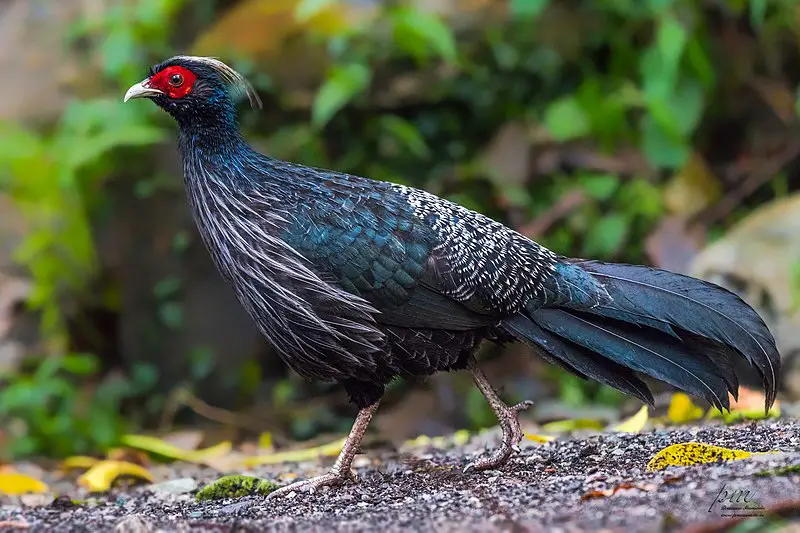
The Kalij Pheasant is a colourful bird found in forests and thickets of the Himalayan foothills, from Pakistan to western Thailand. Males have glossy bluish-black plumage with white markings on their wings, while females are overall brownish.
Both sexes feature a bare red face and grey legs that set them apart from other pheasants. They feed mainly on insects but will also eat seeds and grain when available, making them omnivores by nature.
When courting or displaying aggression towards rivals they create loud vocalisations as well as physical displays such as fluffing up feathers or fanning tails outwards.
These birds live alone during winter months but form pairs for mating season which typically occurs between March – May each year resulting in clutches of eggs being laid shortly after pairing off.Scientific classification:
| Kingdom | Animalia |
| Phylum | Chordata |
| Class | Aves |
| Order | Galliformes |
| Family | Phasianidae |
| Genus | Lophura |
| Species | L. leucomelanos |
Also Featured In: Hawaii Big Island Birds You Should Know, Birds of Jim Corbett National Park
5. Koklass Pheasant
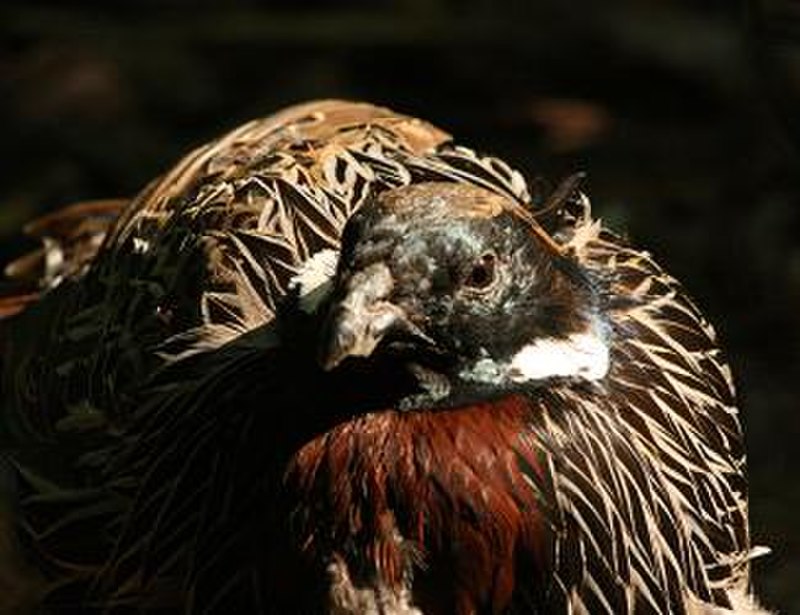
The Koklass pheasant is a unique species of gamebird, closely related to progenitive grouse from the Miocene. It has its own genus Pucrasia and can be found in parts of Asia such as India, Nepal and China.
These birds have an impressive plumage that includes shades of black, blue-grey and white.
They also possess striking fan crest feathers on their heads which are erected during territorial calls; hence why both koklass and pucrasia were derived from the bird’s distinctive sound.
Males tend to be larger than females but they share similar behaviours like eating insects or plant material off the ground while making short flights between vegetation cover when disturbed by predators.
All in all, this marvellous bird captivates people with its beauty – it truly deserves admiration.Scientific classification:
| Kingdom | Animalia |
| Phylum | Chordata |
| Class | Aves |
| Order | Galliformes |
| Family | Phasianidae |
| Subfamily | Phasianinae |
| Genus | Pucrasia G.R. Gray, 1841 |
| Species | P. macrolopha |
6. Blue-Throated Barbet
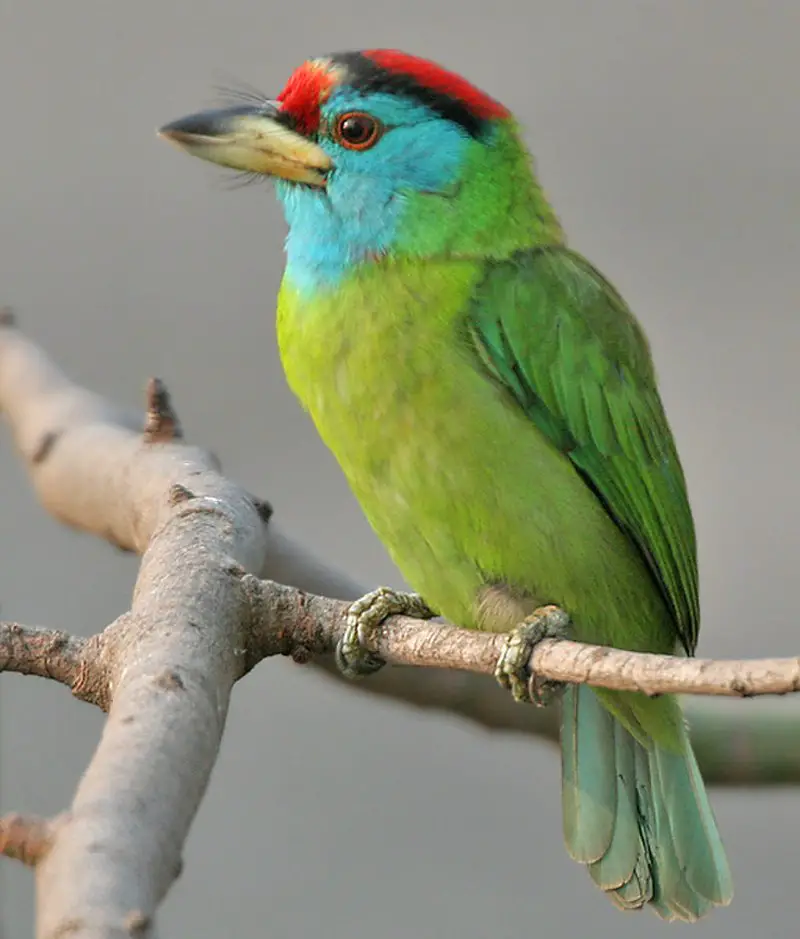
The Blue-throated barbet is a beautiful bird, native to the foothills of the Himalayas and Southeast Asia. It lives in lowland and montane forests from 200m up to 2,000m above sea level.
Its vibrant plumage consists of bright green, blue and red feathers. The species gets its name from the bristles which fringe their heavy bills; they feed on fruits as well as insects for sustenance.
These birds are quite small but have strong voices that can be heard echoing through their habitats day or night.
They’re often seen alone or with other members of their group in trees looking out for food or simply enjoying each others company.
All in all these amazing creatures make an excellent addition to our natural world.Scientific classification:
| Kingdom | Animalia |
| Phylum | Chordata |
| Class | Aves |
| Order | Piciformes |
| Family | Megalaimidae |
| Genus | Psilopogon |
| Species | P. asiaticus |
Also Featured In: Most Common Types of Bangladeshi Birds,
7. Pallas’s Fish Eagle
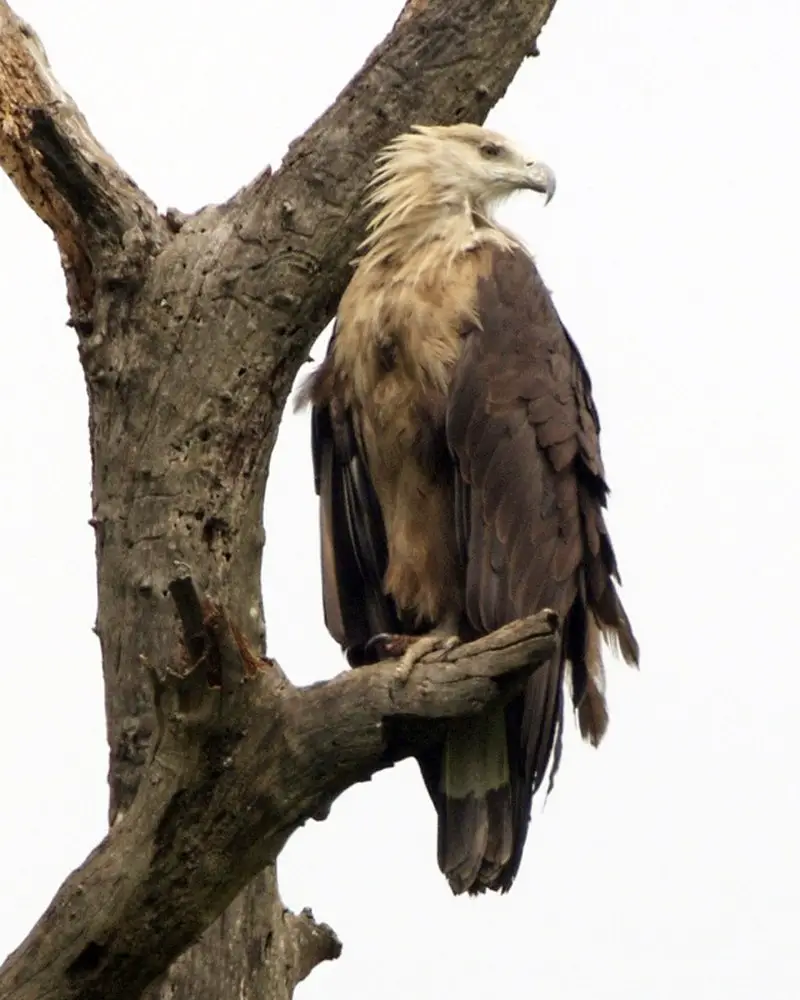
Pallas’s fish eagle is a majestic bird that breeds in east Palearctic. It has a brownish colour and is classified as Endangered on the IUCN Red List due to its decreasing population.
It migrates partially, with Central Asian birds flying south during winter months for food.
This species feeds mainly on fish which it catches near riverbanks or coasts using its sharp talons and powerful wingspan of over six feet.
Although they are difficult to spot due to their elusive nature, Pallas’s Fish Eagle remains an integral part of many ecosystems across Asia where its presence helps keep other populations healthy by controlling the number of fishes available for consumption.Scientific classification:
| Kingdom | Animalia |
| Phylum | Chordata |
| Class | Aves |
| Order | Accipitriformes |
| Family | Accipitridae |
| Genus | Haliaeetus |
| Species | H. leucoryphus |
Also Featured In: Russian Birds, Native Birds of Kazakhstan
8. River Lapwing
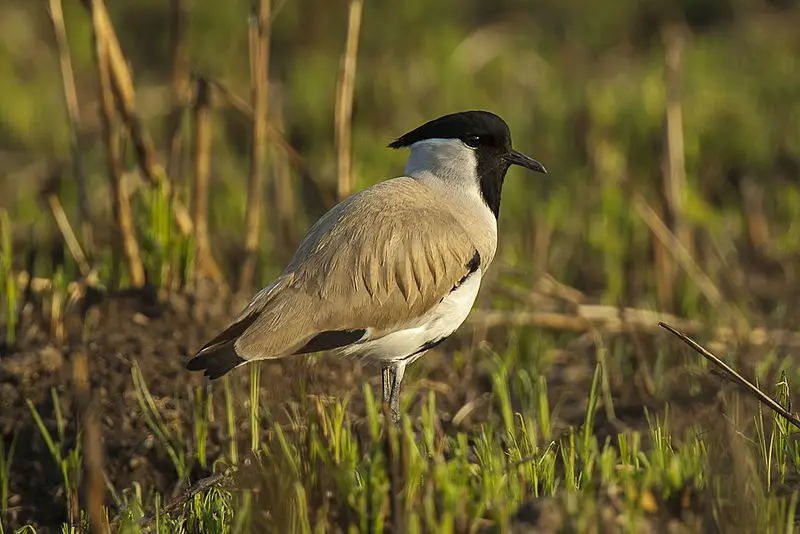
The River Lapwing is a striking black and white bird with long legs and an orange crest upon its head. It can be found throughout much of northern India as well as parts of Southeast Asia, including Vietnam.
This species rarely migrates and tends to stay in the same general area year-round.
The river lapwing has unique features that make it stand out from other birds, such as its bright yellow eyes, short bill, large wingspan for better flight stability, spur-like feathers on its inner wing joints which are used for protection against predators or rivals during mating season.
Despite being quite beautiful when seen up close, this species often goes unnoticed due to their small size; they typically measure between 25 – 28 cm long.Scientific classification:
| Kingdom | Animalia |
| Phylum | Chordata |
| Class | Aves |
| Order | Charadriiformes |
| Family | Charadriidae |
| Genus | Vanellus |
| Species | V. duvaucelii |
Also Featured In: Birds of Myanmar, Common Birds that Live in Odisha
9. Black-Headed Jay
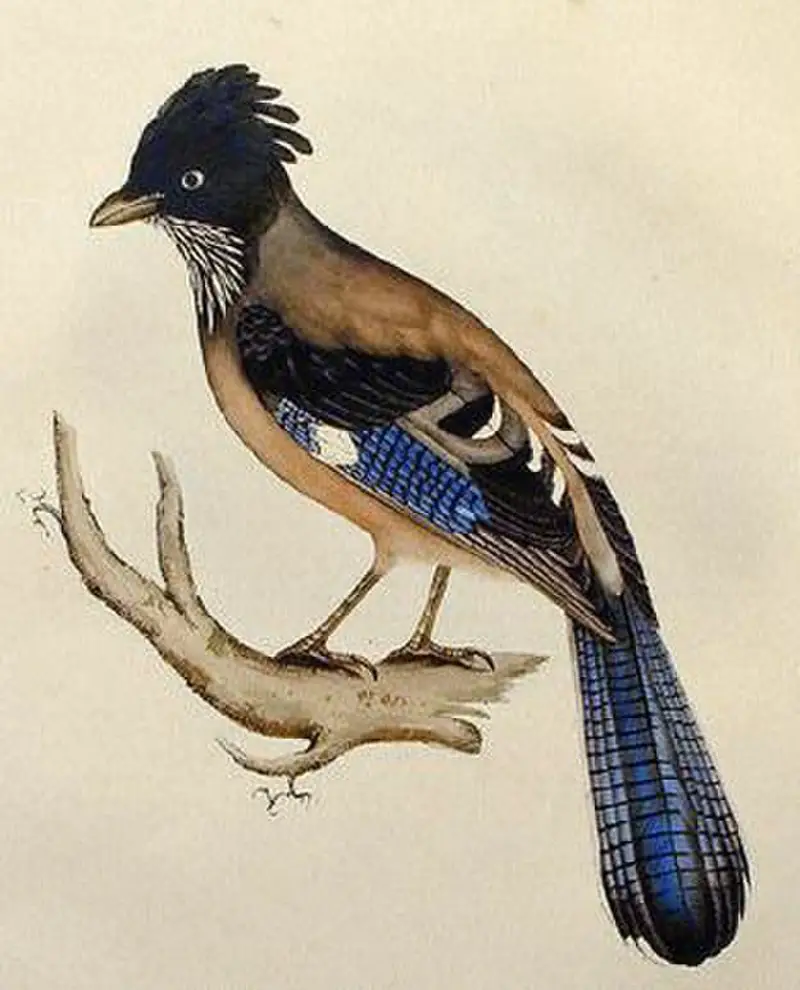
The Black-headed Jay is a stunning bird with its black head and crest, contrasting against the brown feathers of its body. It has long tail feathers that give it an elongated appearance.
This species can be found in Eastern Afghanistan, across the Himalayas to India, Nepal and Bhutan. They are roughly similar size as Eurasian jays but have slightly shorter and thicker bills.
These birds forage on ground level for insects or seeds which they store in their crop before taking them back to their roosts where they feed others from their stash – this behaviour makes them quite popular among farmers.
In addition they also eat fruits such as berries when available during winter months providing food sources for other animals too due to regurgitation of undigested remains.Scientific classification:
| Kingdom | Animalia |
| Phylum | Chordata |
| Class | Aves |
| Order | Passeriformes |
| Family | Corvidae |
| Genus | Garrulus |
| Species | G. lanceolatus |
Also Featured In: Native Birds of Afghanistan, Birds of Islamabad
10. Lesser Yellownape
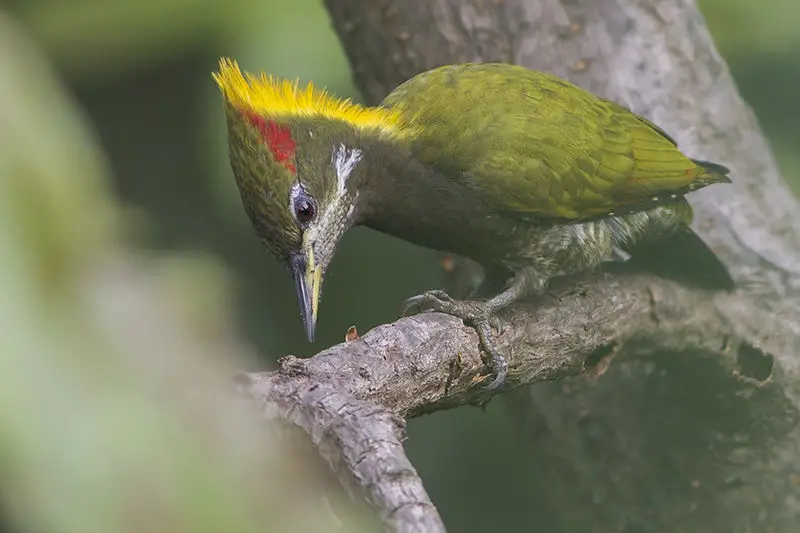
The Lesser Yellownape is a type of woodpecker found in tropical and sub-tropical regions of Asia. It ranges from India to Thailand, Burma, Cambodia, Laos, Indonesia, Malaysia and Vietnam.
Its scientific name is Picus chlorolophus which derives from the greenish color on its crown feathers that contrast against its yellow back.
The bird has strong legs with two toes facing forward and two facing backward for better grip while climbing trees or searching for food among bark crevices.
Its wings are broad enough to aid in rapid flight when needed but short enough for maneuverability within forests where it spends much of its time nesting high up in large branches during breeding season.
With such an extensive range across multiple countries this species is considered relatively common throughout parts of East Asia making it one of the most widely distributed birds there today.Scientific classification:
| Kingdom | Animalia |
| Phylum | Chordata |
| Class | Aves |
| Order | Piciformes |
| Family | Picidae |
| Genus | Picus |
| Species | P. chlorolophus |
Also Featured In: Beautiful Malaysian birds,
11. Monal
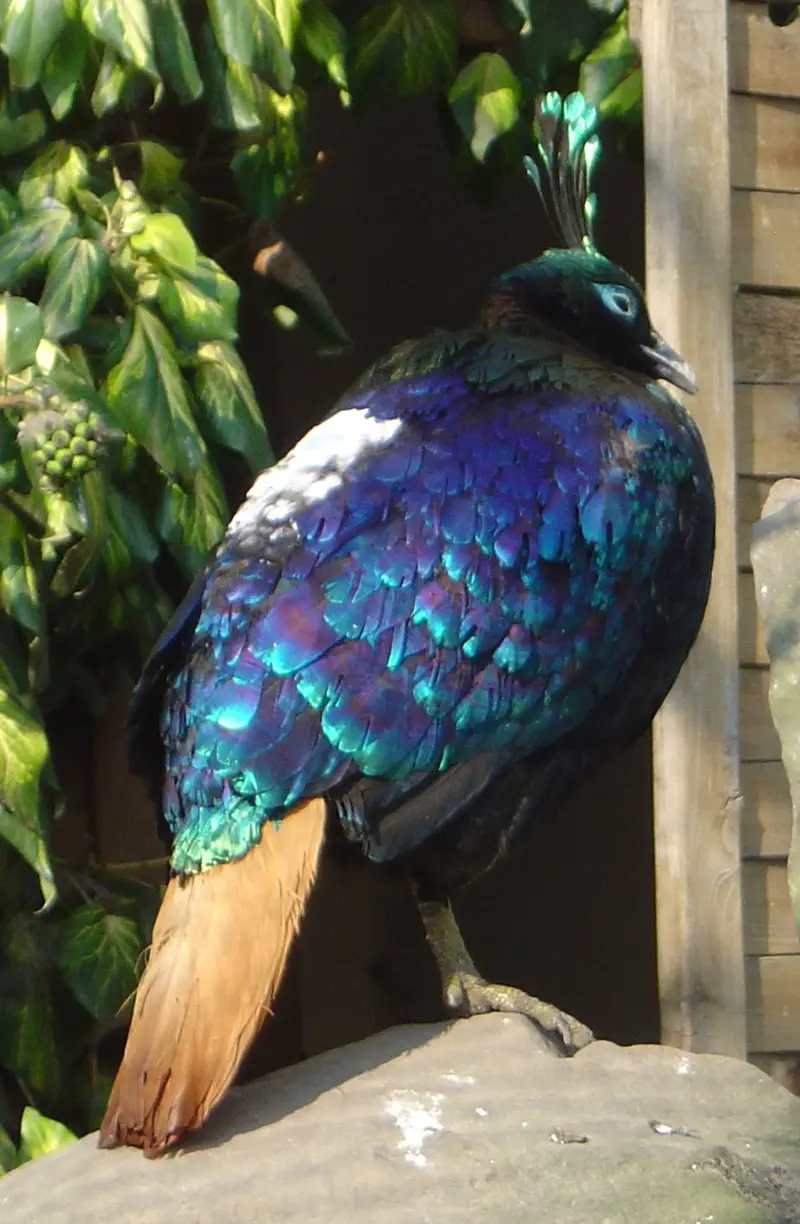
Monal is a bird belonging to genus Lophophorus of the pheasant family, Phasianidae. The male Monals have colorful and iridescent plumage which makes them attractive.
They are plump in shape with their diet consisting mostly of plants such as roots and bulbs along with some insects thrown in for good measure.
During mating season, the males become polygamous by taking multiple partners while females only stick to one partner forming monogamous relationships.
Overall it can be said that Monal birds make an interesting sight due to their fascinating characteristics and vibrant colors.Scientific classification:
| Kingdom | Animalia |
| Phylum | Chordata |
| Class | Aves |
| Order | Galliformes |
| Family | Phasianidae |
| Tribe | Lophophorini |
| Genus | Lophophorus Temminck, 1813 |
Also Featured In: Common Birds Found in Nepal,
12. Wood Snipe
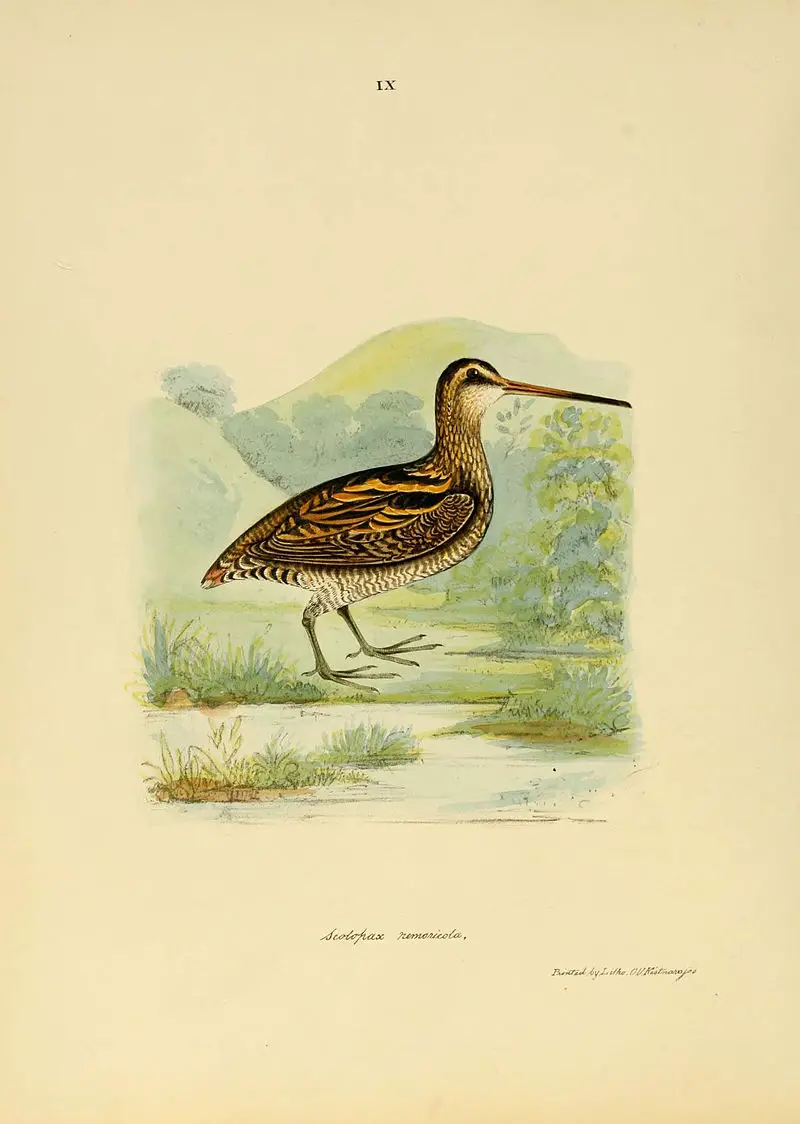
The Wood Snipe is a species of snipe found in the Himalayas from northern India, Nepal and Bhutan to southern China. It has dark plumage making it quite difficult to spot as it forages on open grasslands or wet meadows.
During winter months these birds travel down to lower altitudes in search for food where they are seen more commonly by bird watchers.
The Wood Snipe can also be spotted as an occasional vagrant throughout central and southern India, Sri Lanka, Bangladesh, Myanmar , North Thailand and Laos .
They feed mainly on insects which they pick up off the ground with their long bill while walking around looking for food.
In addition to this diet they are known to consume some vegetable matter such as seeds when available during winter seasonScientific classification:
| Kingdom | Animalia |
| Phylum | Chordata |
| Class | Aves |
| Order | Charadriiformes |
| Family | Scolopacidae |
| Genus | Gallinago |
| Species | G. nemoricola |
Also Featured In: Birds in Sri Lanka,
13. Crested Kingfisher
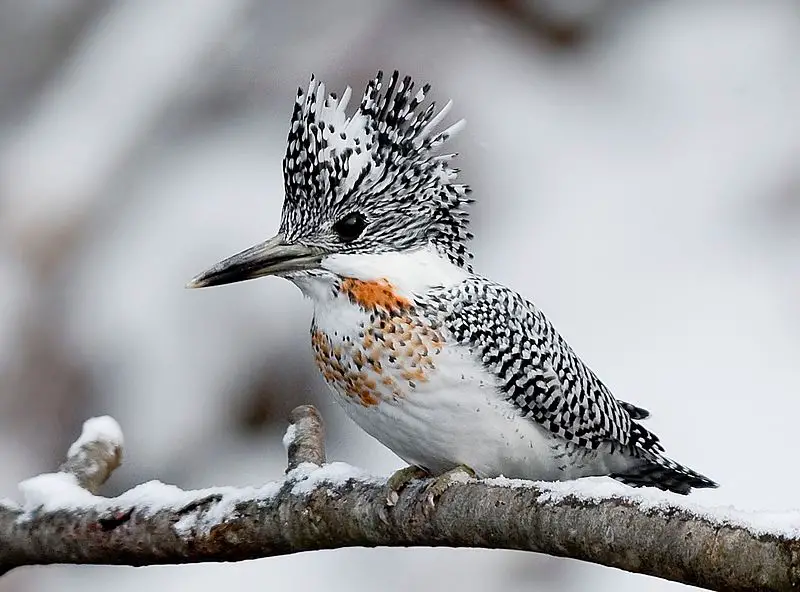
The Crested Kingfisher is a very large bird, native to parts of southern Asia stretching eastwards from the Indian Subcontinent to Japan.
It forms a species complex with three other Megaceryle species and was first formally described by Dutch zoologist Coenraad Jacob Temminck in 1834.
The Kingfisher has an impressive size ranging between 28-33 cm long and can weigh up to 85 gms. Its distinctive crest adds beauty as it gives them their name ‘Crested’.
They have bright blue upperparts along with white underparts, reddish bill and legs; often making its presence known through loud callings that echo across forests or wetlands they inhabit.
Their diet mainly consists of fish but also includes insects, crustaceans & frogs which are all caught using its sharp beak.
All in all this beautiful yet powerful creature makes for one interesting sighting out there.Scientific classification:
| Kingdom | Animalia |
| Phylum | Chordata |
| Class | Aves |
| Order | Coraciiformes |
| Family | Alcedinidae |
| Subfamily | Cerylinae |
| Genus | Megaceryle |
| Species | M. lugubris |
Also Featured In: Kingfishers Species, Most Common Fukuoka Birds
14. Old World Babbler
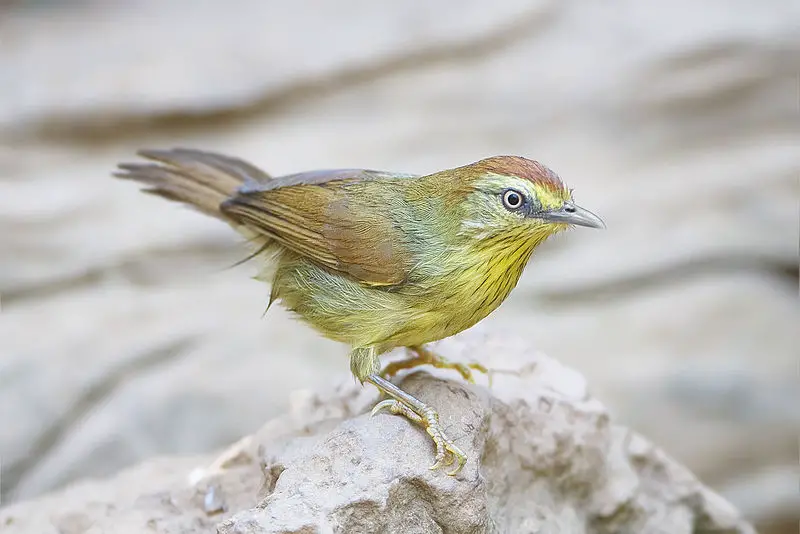
The Old World babbler bird is a passerine bird characterized by soft and fluffy plumage, with diverse size and coloration.
They are commonly found in tropical regions, particularly in Southeast Asia and the Indian subcontinent.
The Old World babblers are one of two groups known as babblers, with the other being the Australasian babblers.
These birds have a unique appearance and create a charming atmosphere with their soft, mellow sound.
They live in a wide range of environments from forests to gardens and thrive on insects and fruits.
Old World babblers are typically social birds that often travel in groups, with some even engaging in communal living.
Despite their somewhat small size, these birds are beloved among birdwatchers, and many people enjoy observing them in their natural habitats.Scientific classification:
| Kingdom | Animalia |
| Phylum | Chordata |
| Class | Aves |
| Order | Passeriformes |
| Superfamily | Sylvioidea |
| Family | Timaliidae Vigors & Horsfield, 1827 |
Also Featured In: Asian Birds, Most Common Taiwan Birds
15. Great Barbet
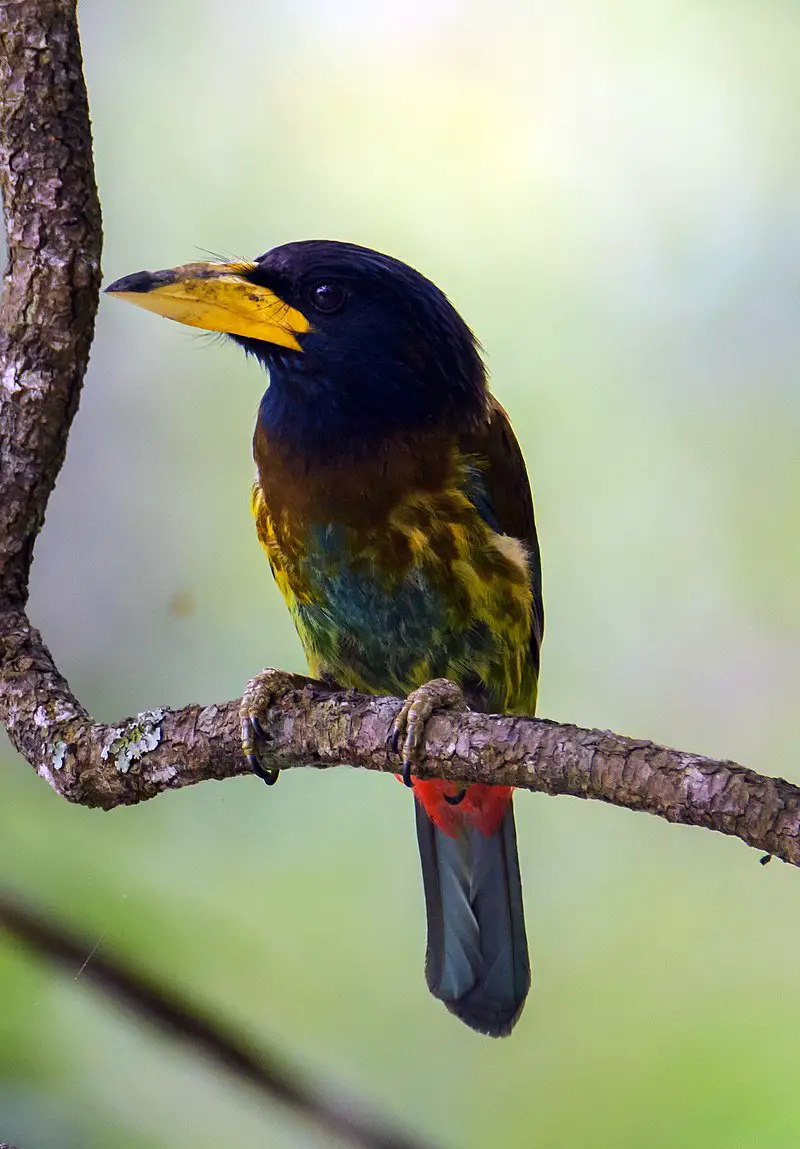
The Great Barbet is a bird species that is indigenous to the Indian subcontinent and Southeast Asia. It mainly resides in forests situated up to 3,000 meters above sea level.
This bird has an attractive and colorful appearance and is a common sight in the region. Its scientific name was suggested as Bucco virens in 1783 by Pieter Boddaert.
Despite being listed as Least Concern on IUCN’s Red List, these birds still face threats from habitat loss and hunting.
The Great Barbet’s wide distribution across its natural range allows it to survive and continue to thrive, making it an important part of the region’s ecosystem.Scientific classification:
| Kingdom | Animalia |
| Phylum | Chordata |
| Class | Aves |
| Order | Piciformes |
| Family | Megalaimidae |
| Genus | Psilopogon |
| Species | P. virens |
Also Featured In: Hong Kong Birds You Need to See, Urban Birds of Hong Kong
16. Himalayan Woodpecker
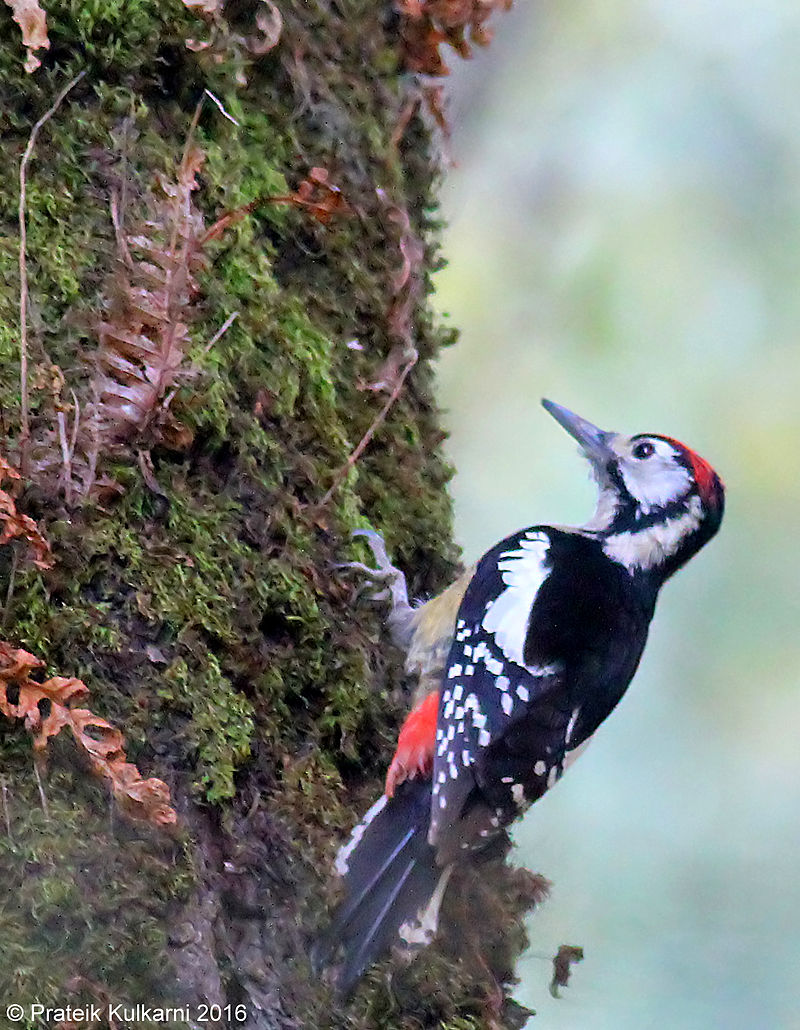
The Himalayan woodpecker is a bird species that belongs to the Picidae family. This particular bird is commonly found in the northern regions of the Indian subcontinent, specifically in the Himalayas and its adjacent areas.
The bird’s habitat typically consists of boreal and temperate forests. It has a distinct appearance and can be readily identified by its striking red crest and black and white feathers.
Although its population size is currently unknown, the Himalayan woodpecker is not considered to be endangered by the International Union for Conservation of Nature.
Overall, the Himalayan woodpecker is a fascinating and beautiful bird species that continues to thrive in its natural habitats.Scientific classification:
| Kingdom | Animalia |
| Phylum | Chordata |
| Class | Aves |
| Order | Piciformes |
| Family | Picidae |
| Genus | Dendrocopos |
| Species | D. himalayensis |
17. Long-Tailed Minivet
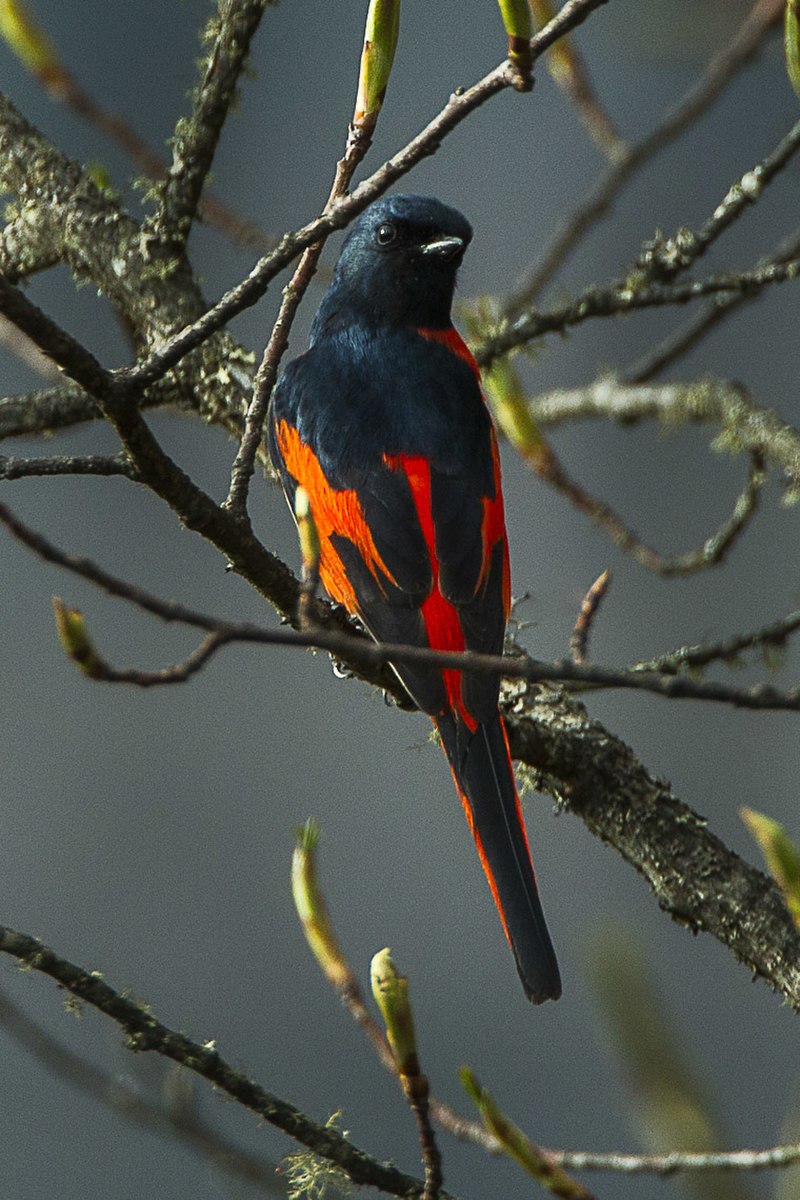
The Long-tailed Minivet is a colorful bird that can be found in southern and southeast Asia. Its striking plumage is a mix of black, white, and fiery orange-red hues, making it easy to spot in its natural habitats of moist lowland and montane forests.
This bird can be found in countries like Afghanistan, Bangladesh, and Vietnam, among others.
The Long-tailed Minivet belongs to the family Campephagidae and has an elongated tail, which is a prominent feature that gives it its name. Its diet mainly consists of insects, which it catches while in flight.
The males have more vibrant plumage compared to the females, and they are known to be vocal birds that make loud, melodious calls.
These birds are fascinating to observe in the wild and are a delight to many bird-watchers around the world.Scientific classification:
| Kingdom | Animalia |
| Phylum | Chordata |
| Class | Aves |
| Order | Passeriformes |
| Family | Campephagidae |
| Genus | Pericrocotus |
| Species | P. ethologus |
Also Featured In: Delhi Birds You Need to See, Birds that Commonly Found in Andhra Pradesh